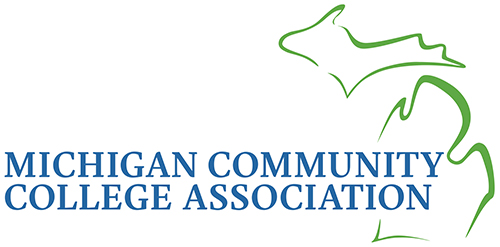These are the big Michigan education issues we’re watching in 2023

- With Democrats controlling the Legislature and governor’s office, some long-buried school efforts are likely to get hearings
- Among them are measures that would require more transparency on how charter schools spend taxpayer dollars
- There may be more opportunity for bipartisan bills on issues like student mental health, absenteeism and early childhood education
COVID may no longer be forcing schools to shut down, but its effects on students, teachers, parents, and administrators will linger into 2023.
Issues related to student recovery from the pandemic figure in many of the top education issues for 2023. So do issues related to a power shift in Lansing, where Democrats will hold the governor’s office and control the Michigan Legislature for the first time in decades. This shift, thanks to a blue wave in the November general election in Michigan, could produce big changes on issues such as charter school transparency, the state’s third-grade retention law, and school funding.
Related:
- Michigan Democrats’ big education priority: Reform or kill read-or-flunk law
- Foster children to Michigan: Remove barriers, help us graduate school on time
- Whitmer’s school parent council: Public service, public relations, or both?
“This is a legislature that could do a fair bit in a bipartisan fashion, because I think most of (what we need) is not partisan,” said state Superintendent Michael Rice, recently. “I think much of this is common sense.”
Here are the topics we’ll be closely following:
Retention rule in reading law could be repealed
Democrats have made it a priority to revise the controversial Read by Grade Three law that required schools to hold back third graders who are more than one grade level behind in reading. The law allows so many exemptions that few students are actually retained, but Democrats want to repeal the retention provision to ensure no one is held back because of the law.
Democrats say they would keep other portions of the reading law that require teacher training, frequent reading assessment, individualized help for struggling readers, and guidance for parents to reinforce reading instruction at home.
The repeal effort could open the door to other reading reforms, including from a group of lawmakers pressing for reading instruction to be based on phonics. That method teaches children to read by sounding out words and understanding rules of spelling and pronunciation, such as dropping the silent “e” before adding “-ing” to a verb.
Research shows that method works best for students with dyslexia, a neurological disability characterized by difficulties with word recognition. Democratic state Sen. Jeff Irwin of Ann Arbor and Republican state Rep. Jim Runestad of White Lake, who sponsored a package of bills in the last legislative session to require more support for students with dyslexia, say phonics-based instruction can be helpful for all students. (Their bills stalled in the House.)
Many districts including Detroit Public Schools Community District, the state’s largest, already use phonics-based instruction, but some still use “balanced literacy” instruction, also called “whole language.” That approach relies on repetition, teaches children to memorize “sight words,” and encourages them to decipher words based on context and pictures.
Runestad, who has dyslexia, said balanced literacy instruction doesn’t work for a lot of students. He and Irwin say they hope that reopening the third-grade reading law will give them another chance to legislate phonics instruction.
Can Michigan make a dent in chronic absenteeism?
Michigan students missed more school than ever last year, raising alarms among policymakers and setting off a search for solutions.
Though we don’t know how much COVID contributed to high absenteeism rates, observers in Michigan say they’re optimistic that the trend was driven by illness-related absences, and that kids will show up to class more regularly this year.
But a return to pre-pandemic levels of absenteeism would still be deeply problematic for many communities across the state.
Detroit, in particular, faces what researchers call a “uniquely challenging” context for attendance thanks to its limited public transit, high child poverty, high asthma rates, and cold weather. Years before the pandemic, Detroit’s rates of chronic absenteeism — defined as missing at least 10 percent of school days — were the highest of any big city.
What can be done? Absenteeism is a complicated problem with many possible solutions. Increasing funding for school transportation is one option — and could get a look from the Legislature this year. Another is expanding before- and after-school programs, a strategy that has begun to take hold in Detroit. Later pickup times simplify school transportation for parents who don’t get out of work until hours after the school day ends.
Letter-grade school rating system could end
Republican lawmakers created an A-F school system to rate schools in 2018, saying it would make it easier for parents to gauge how schools are performing. But Rice, the state superintendent, says it has only created unnecessary work that duplicates information already available through the state’s index reporting system, which scores schools on a 100-point scale based on some of the same criteria.
The index system meets federal requirements as a way to identify and offer extra support to schools in the lowest 5 percent based on test scores, graduation rates, absenteeism, and more. In Michigan, those schools become part of the state’s partnership district turnaround program.
Rice, who has long opposed the A-F grades, said the index system is sufficient. Ending the letter grades hasn’t been a priority of state lawmakers, but the Michigan Department of Education is pressing for them to do it in the coming session.
“A second accountability system adds nothing to our general knowledge about children and student achievement,” Rice said during the December meeting of the state Board of Education. “You can’t run multiple systems and not have an impact on the resources — temporal or financial — of educators in support of young people.”
Charters could face more transparency requirements
How much do charter schools pay teachers and other staff? How much do they pay for textbooks? If they are operated by a for-profit company, how much profit do they generate from public funding?
Democrats think the public has a right to know.
The information has long been inaccessible to the public under the laws governing Michigan charter schools, which enroll about 10 percent of students in the state and close to 50 percent of Detroit students.
Charters are publicly funded but generally rely on management companies to handle the nuts and bolts of education, from hiring teachers to purchasing curriculum and paying custodial staff.
Those companies aren’t subject to the same transparency laws as school districts. When Michigan’s State Board of Education tried to get detailed financial information about 166 charters this year, it was rebuffed in almost every case.
Democrats have sought changes for years. A package of bills introduced this year by several senators, including Dayna Polehanki, the likely chair of the Senate Committee on Education and Career Readiness, would require management companies to produce public, audited financial statements each year.
Michigan charter advocates and Republicans generally oppose the measures.
Concerns remain about educator shortage
Education leaders believe it won’t be quite as hard to hire teachers in 2023 as new recruitment and retention strategies begin to take hold, but they won’t breathe sighs of relief anytime soon.
A return to normalcy after two years of COVID surges brought education majors, like other students, back to college to finish teaching degrees and enter the workforce, Rice said. At the same time, alternative route programs helped college graduates become certified to teach so they could enter classrooms quickly.
All of those measures have made a difference for Niles Community Schools in southwest Michigan, which is seeing “some quality candidates” coming out of retirement and alternative route certification programs, Superintendent Dan Applegate said.
There is still a “profound shortage” of educators, Rice cautioned. He is banking on several initiatives put in place last year to provide more relief — eventually.
Those include tuition grants for prospective teachers and pay for student teachers. Rice said these steps seem to be paying off. More than 2,300 applied for scholarships, and more than 2,500 applied for MI Future Educator student teaching stipends during the first five weeks applications were open for the new programs.
Rice said he hopes the new programs are just the beginning as lawmakers realize the magnitude of the state’s problem attracting and retaining teachers.
“I would anticipate that the Legislature would continue to work on this area until it is clear that we’ve reached a point in time where we don’t need to incentivize” people to enter the teaching profession.
But lawmakers also need to think about retaining those teachers once they’ve been certified and hired, he said. That could mean better pay, better working conditions, and a greater voice in how instruction is delivered, he said.
Teacher retention is a priority for Gov. Gretchen Whitmer, too, as she enters a second term.
In the leadup to the election, Whitmer, a Democrat, told Chalkbeat and Bridge that she would revisit her proposal to give retention bonuses to teachers. She couldn’t get the Legislature — then under Republican control — to enact them, but will have a better chance with her own party leading both chambers.
Student academic, mental health challenges are urgent
A big question in 2023 is whether schools will do what’s needed to improve student academic performance and address student mental health needs.
Both issues are urgent. In September, the state released data showing Michigan student performance has declined sharply from pre-pandemic levels — a sign of how much the pandemic has affected students.
For instance, 41.5 percent of third-graders statewide scored at least proficient in math on the state’s standardized test, a decline of 5.2 percentage points from 2019, the last time the test was given before the pandemic.
Long stretches of remote learning during the first year of the pandemic, and the slow recovery since, have certainly been an issue. Students said they felt isolated and disconnected, and they said it was difficult to learn online.
When scores were released in September, advocates for improvement said educators must push hard.
“It would be easy to wave off these results and say they were expected because of the traumatic past two years of unfinished learning during COVID-19,” said Amber Arellano, the executive director of the Education Trust-Midwest. “The truth is that our state has been behind our peers across the nation for far too long, and long before the pandemic.”
There is reason to believe this year could be different. The current 2022-23 school year was the first since the pandemic started to open with nearly all students back in person consistently, and so far, it has not seen COVID surges that shut down schools completely, or declines in student attendance due to quarantining rules.
Key to improving academic improvement is addressing students’ mental health needs. Schools across the U.S. were already facing a student mental health crisis before the pandemic. But pandemic learning exacerbated the problem. And some students say it isn’t getting much better.
Listen to what Perriel Pace, an outspoken student activist in Detroit, had to say about it in a recent Q&A:
“I spoke to a few students yesterday who told me that they don’t want to do this anymore. School is mentally draining. It’s not engaging. It doesn’t feel like we’re happy anymore. It’s just work, work, work.”
Schools have plenty of money to expand academic and mental health services for students. What they don’t have, though, is people. School officials have reported that while they have expanded services in these areas, they’ve struggled to expand enough because there aren’t enough tutors and mental health professionals to go around.
Will Michigan’s early childhood sector emerge stronger from the pandemic?
The pandemic brought a massive infusion of funding into the early childhood sector. Lawmakers used the money to prevent a catastrophic wave of closures, and to expand and strengthen the state’s offerings for children ages 0-5.
While the first measure was largely effective, the outcome of the second is far from clear.
Will efforts to expand the state preschool program be undermined by shortages of early educators? Will improvements to the state child care subsidy program be sustained when federal COVID relief dollars expire?
Over a decade of Republican control in Lansing, early childhood programs in Michigan largely enjoyed bipartisan support and growing budgets, even if advocates worried that many programs remained underfunded.
With Democrats taking full control in Lansing, they have the freedom to redefine the state’s early childhood agenda for the first time in decades. But sustaining federally fueled gains for early childhood would take major new investments — never a politically straightforward proposition — and Democrats’ majorities in the Legislature are narrow.
How will Democrats approach school funding?
Whitmer and Democratic lawmakers won reelection in part on a promise to cut taxes for low-income workers and retirees.
Whitmer has also pledged to improve Michigan’s school funding system, drawing on a nonpartisan study that outlined the true cost of providing a high-quality education to the state’s 1.4 million students.
That cost is hefty — experts peg it at upwards of $3 billion annually — and would almost certainly require new revenue from taxes.
How Whitmer squares those priorities will shape school funding this year and beyond.
During her first term, Whitmer didn’t push for structural reforms to school funding, opting instead to move the state step by step toward a system that, as the study recommends, provides substantial additional funding for the students who cost the most to educate, such as students with disabilities and those from low-income families.
Whitmer and Democratic leaders could draw on the state’s surpluses to stick with that approach, expanding the budget without fundamentally changing the way the state pays for education. But many in the education community will push them to think big.
Whitmer will tip her hand in February, when she is expected to release her budget priorities in collaboration with top Democratic lawmakers.
COVID relief spending continues
Federal COVID relief money has helped school districts pay for expanded tutoring, mental health services for students, and other resources needed to recover from the pandemic. It has also helped school districts, particularly those that are financially troubled, become more secure.
The spending will continue in 2023, and Chalkbeat — along with our partners at Bridge Michigan and the Detroit Free Press — will be closely following how school districts prioritize where the money goes, and whether the money is helping students recover from the pandemic.
Across the nation, Chalkbeat found, districts have stepped up their spending since the beginning of 2022, when analysts warned that public schools could forfeit some of the windfall unless spending sped up.
In Michigan, the problem has been less about whether the money will be spent, and more about some other issues. For instance, district officials reported in 2022 that they were struggling to hire enough tutors and mental health professionals to address the needs in their districts.
Also, districts spending some of their COVID funding to upgrade facilities — an allowable expense — are finding that costs are increasing for the work they need to get done. In November, Detroit Superintendent Nikolai Vitti told board members during a committee meeting that the end date for projects that are part of a $700 million facility initiative is now 2029, four years later than the original end date. Agenda materials cited “the current labor market, delays in equipment and material shipments, and the number of construction projects that are currently underway in Southeast Michigan.”
Chalkbeat Detroit bureau chief Lori Higgins contributed to this report.
Tracie Mauriello covers state education policy for Chalkbeat Detroit and Bridge Michigan. Reach her at [email protected].
Koby Levin is a reporter for Chalkbeat Detroit covering K-12 schools and early childhood education. Contact Koby at [email protected].
Michigan Education Watch
Michigan Education Watch is made possible by generous financial support from:
Subscribe to Michigan Education Watch
See what new members are saying about why they donated to Bridge Michigan:
- “In order for this information to be accurate and unbiased it must be underwritten by its readers, not by special interests.” - Larry S.
- “Not many other media sources report on the topics Bridge does.” - Susan B.
- “Your journalism is outstanding and rare these days.” - Mark S.
If you want to ensure the future of nonpartisan, nonprofit Michigan journalism, please become a member today. You, too, will be asked why you donated and maybe we'll feature your quote next time!






